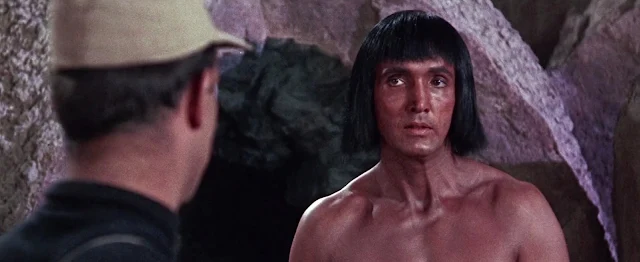A blog formerly known as Bookishness / By Charles Matthews
"Dazzled by so many and such marvelous inventions, the people of Macondo ... became indignant over the living images that the prosperous merchant Bruno Crespi projected in the theater with the lion-head ticket windows, for a character who had died and was buried in one film and for whose misfortune tears had been shed would reappear alive and transformed into an Arab in the next one. The audience, who had paid two cents apiece to share the difficulties of the actors, would not tolerate that outlandish fraud and they broke up the seats. The mayor, at the urging of Bruno Crespi, explained in a proclamation that the cinema was a machine of illusions that did not merit the emotional outbursts of the audience. With that discouraging explanation many ... decided not to return to the movies, considering that they already had too many troubles of their own to weep over the acted-out misfortunes of imaginary beings."--Gabriel García Márquez, One Hundred Years of Solitude
Search This Blog
Showing posts with label John C. Higgins. Show all posts
Showing posts with label John C. Higgins. Show all posts
Monday, December 9, 2019
T-Men (Anthony Mann, 1947)
T-Men (Anthony Mann, 1947)
Cast: Dennis O'Keefe, Alfred Ryder, Wallace Ford, Charles McGraw, Mary Meade, Jane Randolph, June Lockhart, Art Smith, Herbert Heyes, Jack Overman, John Wengraf, Jim Bannon, William Malten. Screenplay: John C. Higgins. Cinematography: John Alton. Art direction: Edward C. Jewell. Film editing: Fred Allen. Music: Paul Sawtell.
With its tough-guy cast, suspenseful screenplay, and superb noir-and-white cinematography by John Alton, T-Men is only slightly hindered by efforts to sell itself as a ripped-from-the-headlines True Story. It has a heavy-handed opener featuring the real head of the Treasury Department's investigative division, Elmer Lincoln Irey, selling us on the idea that the IRS is really our friend, and an ongoing voiceover narrative by the actor Reed Hadley that provides exposition we mostly don't need -- it could easily have been integrated into the dialogue. These flaws aside, the film has real grit as it follows T-man Dennis O'Brien (Dennis O'Keefe) and his partner Tony Genaro (Alfred Ryder) in their investigation of a counterfeiting scheme, encountering the usual menacing thugs and hard-bitten dames. Neither of the good guys has it easy, getting beat up and shot as they sleuth through the seamy side of '40s Los Angeles. Alton's camera gives us expressionistic angles and sinister shadows as it explores some well-chosen locations from Chinatown to a Turkish bath to the waterfront.
Friday, October 18, 2019
Robinson Crusoe on Mars (Byron Haskin, 1964)
Robinson Crusoe on Mars (Byron Haskin, 1964)
Cast: Paul Mantell, Victor Lundin, Adam West. Screenplay: Ib Melchior, John C. Higgins, based on a story by Daniel Defoe. Cinematography: Winton C. Hoch. Art direction: Arthur Lonergan, Hal Pereira. Film editing: Terry O. Morse. Music: Van Cleave.
The average third-grader today can spot the scientific inaccuracies of Robinson Crusoe on Mars. Who doesn't cringe when Christopher Draper (Paul Mantell) tries to start a fire by feeding the flames with the oxygen from his supply tank, an attempt most likely to send him up in a large fireball? The special effects, too, are primitive: The attacking spaceships are two-dimensional, paintings on a black backdrop. But does any of this really matter? With older films, even science fiction, datedness often counts for less than style and substance. Byron Haskin's movie has both, largely because it's derived from a classic source, Daniel Defoe's 1719 tale of solitude and companionship. It plays on the primal fear of loneliness that makes solitary confinement the worst of punishments and is the backbone of many classic adventure stories, including such other great sci-fi films as 2001: A Space Odyssey (Stanley Kubrick, 1968) and The Martian (Ridley Scott, 2015). Even though Draper has a companion on Mars, a small monkey, his inability to converse with another human drives him near to madness -- a hallucination of his dead companion, Col. McReady (Adam West) -- before he finally encounters his Friday (Victor Lundin). Even then the breakthrough is slow to come: The alien humanoid at first refuses to speak, causing Draper to fume that he's "an idiot" and "retarded." But finally the alien trusts Draper enough to speak and the rapport blooms into a kind of interplanetary bromance as they learn each other's language and culture. (The master-servant Crusoe-Friday relationship remains, however: Draper expects his Friday to learn English first. Colonialism dies hard.) So forget everything we've learned from the various NASA probes about Martian terrain -- the absence of flaming volcanoes or of anything resembling "canals," let alone abundance of water and subaqueous plant life -- and accept the movie's vision for what it is: more a fable about long-ingrained human character than about what the future may be like. Byron Haskin's direction keeps the action crisp and steady, and while the studio sets have a certain cheesy quality, the footage shot at Death Valley's Zabriskie Point is often strikingly real.
Subscribe to:
Comments (Atom)


































